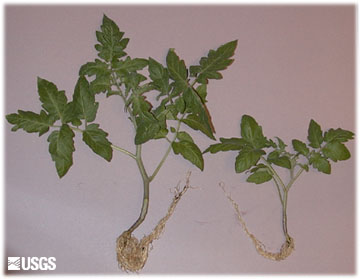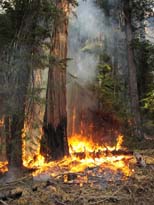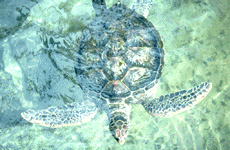- Home
- About S&T
- Taxa/Organisms
- Ecosystems
- Issues
- Methods & Tools
- Reports & Publications
- Location
- Search
November 2007 | Publisher: USGS | Format: .PDF
biology.usgs.gov — The greater sage-grouse (Centrocercus urophasianus) and the Gunnison sage-grouse (C. minimus) are species of concern because of their population declines and shrinking geographic distributions. Of continuing interest is the question of population abundance and trends. This publication answers the questions that deal with sage-grouse population, More...

1999 | Publisher: USGS | Science Center: Fort Collins Science Center (FORT, Ft. Collins) | Format: URL
www.fort.usgs.gov — A quasi-experimental situation exists in Rocky Mountain National Park, where elk (Cervus elaphus) populations have increased 3-fold since 1968 following their release from artificial controls within the park. Increases in elk habitat use and decreases in deer habitat use were observed. Significant increases in cover of mosses and lichens occurred More...

Publisher: USGS | Format: URL
www.soilcrust.org — The Biological Soil Crusts website studies the community of organisms that live at the surface of desert soils. Components include cyanobacteria, green algae, microfungi, mosses, liverworts, and lichens. The website discusses structure and formation of crusts, species composition, ecological functions (soil stability, water infiltration, effects More...

Publisher: USGS | Science Center: Western Fisheries Research Center (WFRC, Seattle) | Format: URL
wfrc.usgs.gov — The whole study, conducted at Fort Benning, Georgia, partially funded through the US Army, involves testing of water and soil quality, physical and biotic indicators of stress at both the population and community level. Anthropogenic stress in the present study comes from disturbance by vehicles, particularly tanks used in army training, and from More...

Publisher: USGS | Science Center: Western Fisheries Research Center (WFRC, Seattle) | Format: URL
wfrc.usgs.gov — The objective of this research is to determine if symbiotic fungi are responsible for the invasiveness of plants in non-native habitats. One of the least studied but critical aspects of plant community structure and dynamics involves symbiotic interactions with endophytic and mycorrhizal fungi. In the last several decades it has become apparent More...

Publisher: USGS | Science Center: Western Fisheries Research Center (WFRC, Seattle) | Format: URL
wfrc.usgs.gov — In an attempt to decrease pesticide pollution of aquatic ecosystems, we have begun a project to develop biological control agents to protect plants against fungal diseases. This study has three objectives: (1) understanding how fungi cause disease; (2) understanding how plants that are symbiotic with certain fungi are resistant to fungal diseases; More...

Publisher: USGS | Science Center: Forest and Rangeland Ecosystem Science Center (FRESC, Corvallis) | Format: URL
fresc.usgs.gov — Periodic fire is a natural part of sagebrush steppe ecosystems in the Great Basin. However, a suite of human-caused factors has dramatically changed fire regimes in many of these systems. Decades of fire suppression and livestock grazing have produced dense, single-aged sagebrush stands and invasion by cheatgrass (Bromus tectorum) has increased More...

Publisher: USGS | Science Center: Western Ecological Research Center (WERC, Sacramento) | Format: URL
www.werc.usgs.gov — The Fire and Fire Surrogate study is a network of 13 long-term sites established nationwide to evaluate the ecosystem impacts of different fire hazard reduction treatment in forests that historically experienced short-interval, low- to moderate-severity fire regimes. The fuel reduction treatments being investigated by USGS researchers at Sequoia More...

Publisher: USGS | Science Center: Western Ecological Research Center (WERC, Sacramento) | Format: URL
www.werc.usgs.gov — This web resource addresses the positive relationship between cheatgrass (Bromus tectorum) and fire frequency as a major concern for land managers in semi-arid shrublands throughout western North America, particularly in Great Basin sagebrush steppe. Management tools are needed to break this cycle, and in this project we will evaluate the use of More...

Publisher: USGS | Science Center: Forest and Rangeland Ecosystem Science Center (FRESC, Corvallis) | Format: URL
sagemap.wr.usgs.gov — SAGEMAP - Spatial Data for Sage Grouse and Shrubsteppe Systems is needed for research and management of sage grouse and sagebrush steppe habitats in the western United States. This website is a product of the NBII Great Basin Information Project. Find out more from this resource on sage grouse as endangered species, habitat information, More...

Publisher: USGS | Science Center: Upper Midwest Environmental Sciences Center (UMESC, LaCrosse) | Format: URL
www.umesc.usgs.gov — The diversity of habitat types, plants, and animals in the Upper Mississippi River has declined considerably over the last 50 years, creating loss of aquatic vegetation, loss of islands and side channels behind dams, and changes in river sediments, potentially caused by the method of managing water levels, which maintains artificially high water More...

Publisher: USGS | Science Center: Western Ecological Research Center (WERC, Sacramento) | Format: URL
www.werc.usgs.gov — Native amphibian and reptile populations worldwide are under threat from exotic invasive species of plants and animals, including other reptiles and amphibians. As habitats are changed and plant community organization is modified by exotic species, delicate relationships between plants and animals are altered or eliminated, creating a negative More...
